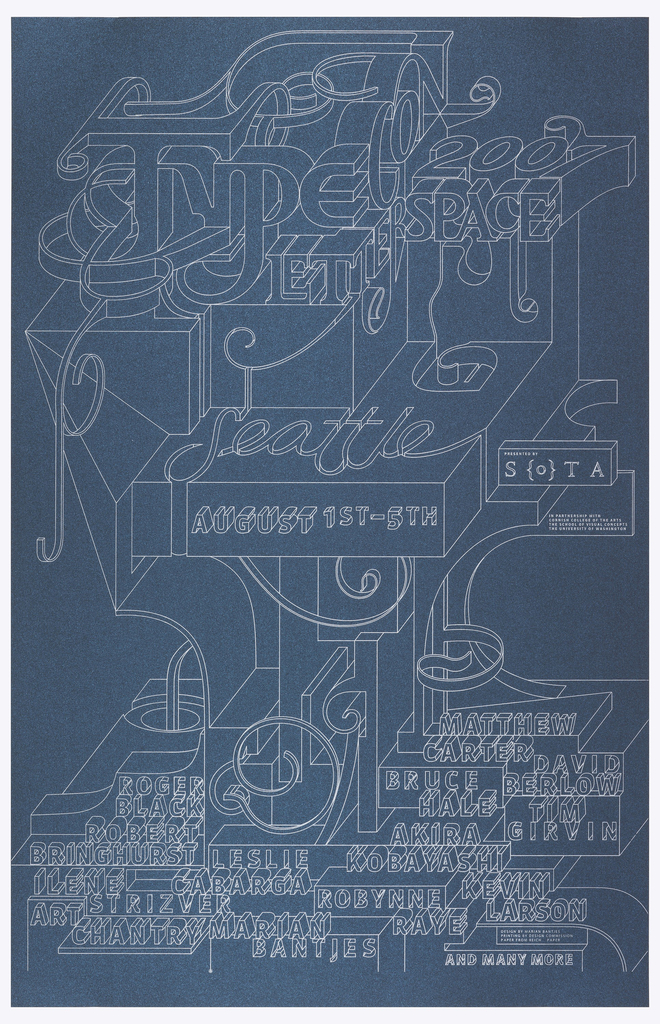Marguerita Mergentime is noted for her innovative use of text as a decorative element, and among her many sources of inspiration were books of calligraphy and penmanship. The “Spencerian” of the title refers to Spencerian script, a cursive writing style developed by Platt Rogers Spencer and promoted through his 1866 book, Spencerian Key to Practical...
Fresco is a hand-drawn and -painted textile created by a team of Indian calligraphers. Formerly employed to paint cinema billboards, these painters now produce craft fabrics. The uniqueness of each textile is only discernible under close scrutiny, when one notices slight variations of lines and the occasional stray ink marks. This overall consistency of application...
In this beautiful sidewall, layers of white, dark brown, and tan lines swirl into compositions reminiscent of chopped-up calligraphy. No words seem to be spelled out, and stylistically the calligraphy hovers between Arabic and Gothic scripts. The layering of the “words” in the paper causes us to see them primarily as ornamental forms, leading us...
Trude Guermonprez was a much-admired weaver and professor of textile arts at California College of Art. She was trained at the School of Fine and Applied Arts in Halle, Germany, sometimes called the “little Bauhaus,” as many of its faculty had studied or taught there. After World War II, she made her way to California...
This fabric, printed in Manchester, England for the African market, has a design which imitates the embroidered gowns worn by Hausa men in Nigera. The design of the embroideries is believed to have been influenced by men who learned the art of calligraphy from studying the Qur’an, and reflect an identification with Islam. They are...
Jianping He was among forty Asian designers invited by the Taiwanese calligrapher Tong Yang-Tze to collaborate on a group of twenty-four works of calligraphy focusing on the subject of “imitating nature.” The theme, which had long been a driving influence in the tradition of Chinese painting and calligraphy, also reminded He of a quote by Albert Einstein: “Look...
Canadian designer Marian Bantjes began her career as a typesetter before creating a personal style that combines type and ornament. This distinctive aesthetic has allowed her to cross boundaries between fine arts and design, illustration and typography. This poster was produced to advertise the annual conference of the Society of Typographic Aficionados (SOTA). It was printed in...
This red-ground textile is decorated with zigzag rows of calligraphic inscriptions including Qur’anic verses, the shahada or Muslim profession of faith, and, in the central wide band, repeated cartouches with the names of the Prophet Muhammad and Allah. Large silks like this were commissioned every year by the Ottoman Sultan, who sent them to the...
This teapot demonstrates a unique way of creating organic and curved lines, which can be seen in the handle. Chunghi Choo’s calligraphy brush strokes served as the inspiration for the handle and knob. According to Choo, the “sweeping movements of the brush…give it a flowing line of energy.”[1] Chunghi Choo studied painting, including Chinese brush...








